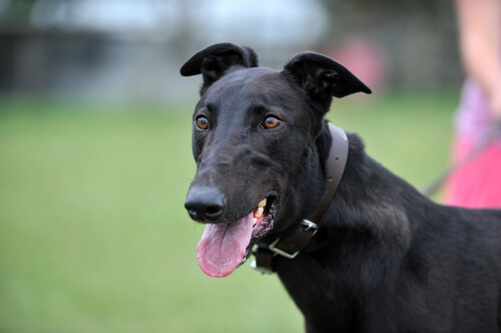The Hydatid Tapeworm (scientific name Echinococcus granulosis) is one of a number of tapeworms that infect dogs. The reason this tapeworm is considered the most significant is that, unlike other tapeworms found in dogs, it can cause an extremely serious and life-threatening disease in humans.
Hydatid tapeworm disease in humans used to be a much bigger problem in Australia than it is now, largely due to the increase in feeding of commercial diets, better worming practices, and the shift towards life in the cities rather than rural areas. Despite this there are still a number of people, particularly children, who are diagnosed each year with this disease, and one or two people who die from it. Certain groups of people are at higher risk of contracting the disease, and most do not know they are affected until the disease is well advanced.

Understanding the Lifecycle of the Hydatid Tapeworm
Like many worms, the hydatid tapeworm has a complex lifecycle that involves a number of species. The mature worm lives and reproduces inside the dog’s intestines so it is considered a dog tapeworm (called the ‘definitive host’). It may also live in the intestines of dingoes and occasionally foxes too. The dog usually shows no signs of infection at all, and some dogs have been found with thousands of tapeworms in their intestines with no apparent illness.
The hydatid tapeworm is so tiny that it cannot be seen in the dog’s droppings – unlike other types of tapeworms which can be seen with the naked eye. The adult tapeworm can live inside the dog for a number of years, and during this time it will periodically produce and shed eggs which pass out in the dog’s droppings. These eggs can survive for months in the environment if the conditions are right – cool, moist, and overcast conditions are perfect.
The lifecycle of the hydatid tapeworm continues via an intermediate host – inside a different species of animal. In the case of the hydatid tapeworm, the intermediate host is sheep, cattle, or kangaroos which graze on the egg-infested pasture.
Once inside the intermediate host, the eggs hatch into larvae. These larvae then migrate through the stomach wall and into the bloodstream before lodging somewhere in the animal’s body – most often the liver and lungs. The larvae then mature to form a ‘hydatid cyst’ which is a watery, fluid-filled cyst in these organs. These cysts contain smaller capsules, with each capsule containing up to 40 hydatid heads – each of which are capable of turning into an adult tapeworm in the dog’s intestines once they are ‘digested’.
Luckily, in cattle, many of the cysts end up ‘dying’ and only about 10% can go on to infect a dog. But in sheep and kangaroos, the cysts are far more likely to remain infective, and the cysts can continue to grow over the life of the animal. When a dog (or dingo) eats the offal from an infected sheep or kangaroo, it also eats the cysts – the life cycle is then completed. Once inside the dog, the cyst releases the hydatid heads and they mature into adult tapeworms ready to start laying eggs within about seven weeks.

Why is this tapeworm such a concern?
The hydatid tapeworm does not cause any serious disease in the dog, so you would not think it would be a problem in our greyhounds. The worst effects are on the intermediate host – the sheep or kangaroo that ends up with huge cysts in their liver, lungs or other organs. The size of these cysts can lead to damage and eventually severe failure of these organs.
The reason this tapeworm is so significant is because sometimes a HUMAN inadvertently becomes the intermediate host – ingesting the eggs of the tapeworm. Similar to the effect in sheep and cattle, the infected human can develop large hydatid cysts in their liver, lungs or even kidneys or brain.
How do humans get Hydatid disease?
Humans can become infected with the tapeworm by accidentally eating the eggs that have been shed by dogs through contaminated food, or they come into contact with the eggs from handling an infected dog.
The hydatid eggs are quite sticky, and can remain stuck on the dog’s coat especially around the anus area. Dogs then lick to groom themselves, and the eggs can be moved through the coat, or can transfer to the face and mouth area of the dog. When a human pats or handles the dog, it is then possible to transfer the eggs onto their hands. People who eat, drink or smoke without washing their hands can then transfer these eggs into their mouth.
Alternatively, humans can become infected from eating raw vegetables (often home-grown ones) that have been contaminated by dog’s droppings. Making sure that dogs do not contaminate the vegie garden, and that all vegies are thoroughly washed can help avoid this.
Note: It is NOT POSSIBLE for humans to become infected by eating the contaminated offal of sheep or cattle
Once inside the human, the damage done depends on where the hydatid cyst forms, and also the size the cyst reaches. If the cyst gets large, the organ it is in will have reduced or altered function – a big cyst in the lungs can make a human very short of breath, a large cyst in the brain can act like a brain tumour. Often the human does not even know they are infected – until the organ fails, and then it is a case of being very sick and needing major surgery to remove the cyst.
Unfortunately, there is no medication to treat the hydatid cysts in humans – surgery is the only option. Sometimes during surgery the cyst leaks or bursts, and each of the leaked hydatid heads may go on to form other cysts, so multiple surgeries are often required.
Am I at risk?
The people with the greatest risk of becoming infected are those in rural areas where dogs and sheep or kangaroos live in close proximity. Anyone who feeds raw offal from sheep, cattle or kangaroos to their dogs is also at increased risk. Unfortunately, the greyhound industry tends to fall into these categories, meaning that many of our industry participants could be at risk if they do not take precautions to avoid becoming infected.
The Department of Primary Industries (Ag Note May 2008) recommends the following measures to break the Hydatid tapeworm lifecycle:
- Avoid feeding offal from possible intermediate hosts – especially sheep and kangaroos
- Do not allow dogs to roam or scavenge from sheep or kangaroo carcasses
- Treat dogs regularly with a worming product that contains praziquantel to remove hydatid tapeworm – it is recommended that dogs that are highly at risk are treated every 6-8 weeks
- Feeding offal to dogs, even if boiled, carries a significant risk of transmitting hydatids, so feed commercially prepared foods
- Wash your hands after handling dogs and before eating, drinking (and smoking) and make sure children are taught to do the same.
- Don’t allow dogs to lick anyone’s face
- Don’t allow dogs to defecate near vegie gardens or children’s play areas
For more information about Greyhound Care and Standards, click here.


